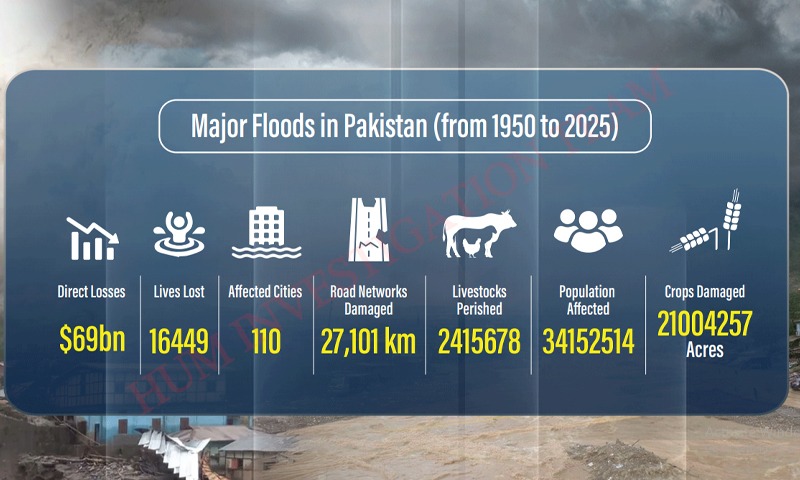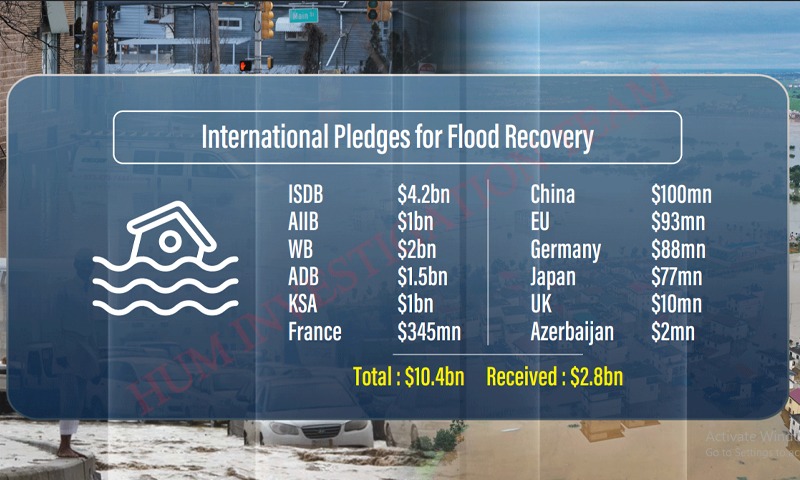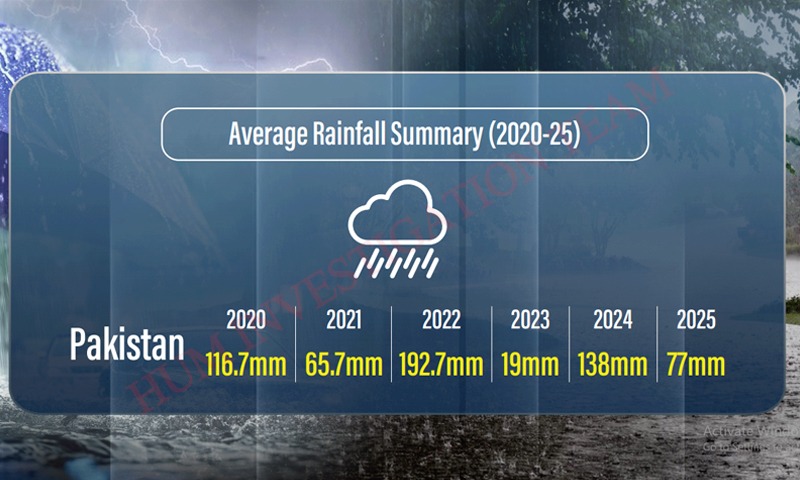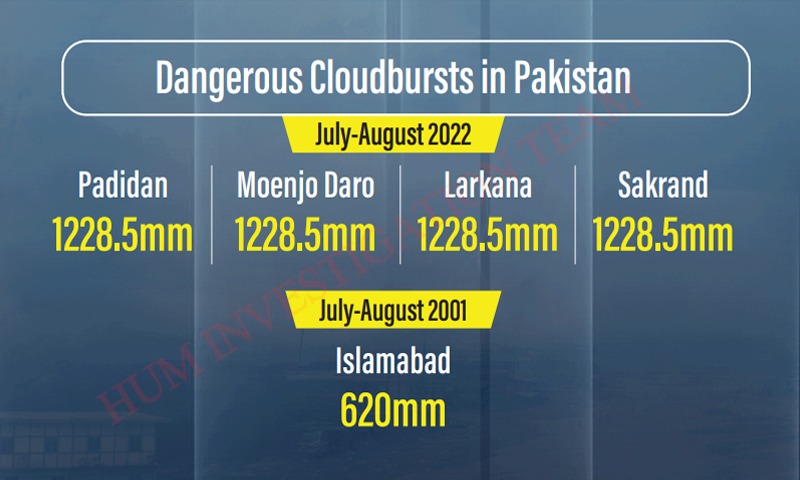ISLAMABAD: Pakistan has witnessed nearly 17,000 deaths in 35 major and minor floods over the past 75 years.
According to official data obtained by HUM Investigates, three of the most devastating floods have inflicted economic losses worth $70 billion.
Floods caused widespread destruction across the country in 2010, 2022 and 2025.
The data shows that almost three dozen floods collectively devastated 110 cities and over 200,000 villages, affecting 750,000 square kilometres of land and destroying 27,101 kilometres of road networks.
As many as 1,154 connecting bridges were washed away by floods with more than 2.4 million livestock perished.
The recurring floods damaged at least 39 small dams while displaced 34.1 million people across the country.

According to the data, over 3.3 million houses were either damaged or destroyed in major floods. The 2010 floods alone caused $10 billion in losses, killed at least 1,985 people, destroyed 6,500 km of road networks, wiped out 354 bridges, and killed more than 900,000 cattle.
Around 6.5 million acres of crops were lost, 21.1 million people were affected, 11 dams were damaged, and 1.65 million houses destroyed.
Buner floods turn wedding celebrations into 24 funerals
The 2022 floods caused $30 billion in losses and claimed 1,739 lives. More than 6,500 villages were destroyed, 4,212 km of road networks wiped out, and 28 dams damaged, affecting 32.5 million people.


Floods destroyed standing crops on more than 19.2 million acres, while the country’s food basket across 70 districts was completely ruined.
In January 2023, the international community pledged $10 billion in aid, but Pakistan has so far received only $2.8 billion.
On climate patterns, the study notes that Pakistan recorded its highest rainfall in five years in 2022, with 192 mm.
Over the past six years, the five districts with the heaviest rainfall also witnessed flooding.
In 2022, Mohenjo Daro topped the list with 779 mm of rain, followed by Sakrand with 617 mm and Khairpur with 606 mm. This year, Jhelum recorded 594 mm of rain, Chaklala 557 mm, and Lahore 538 mm. Karachi saw its heaviest rainfall in 2020 with 588 mm.


Meanwhile, an audit has uncovered serious irregularities worth Rs15 billion in funds allocated for flood and disaster management.
Officials said that in 2015, the southwest monsoon brought nearly 12 per cent less rainfall than the long-term average, but in 2022, rainfall during July and August was double or even more, causing massive human and financial losses.
The World Bank and the Pakistan Climate Council estimated total damages from the 2022 floods at up to $40 billion.


This year, heavy rains in Khyber Pakhtunkhwa and Karachi have caused over 750 deaths, while cloudbursts in Buner, Swat, and Bajaur killed hundreds more.
Climate scientists confirmed that the rains were 10–15 per cent more intense due to climate change, which worsened flooding and destruction.
Several districts in KP were badly hit, leaving hundreds dead and losses worth billions of rupees. Data is now being compiled on the destruction from the 2025 urban and riverine flooding, officials said.

